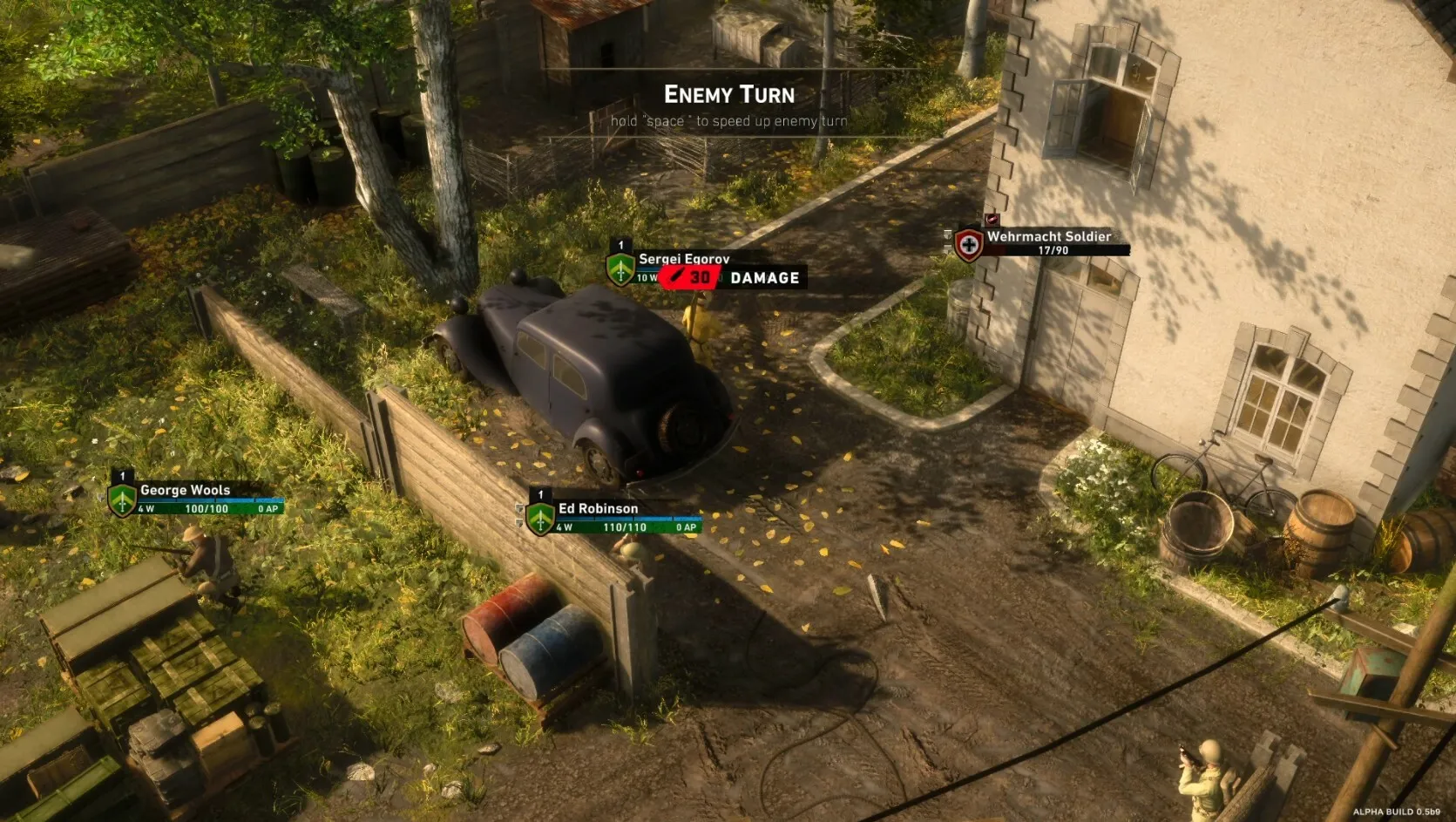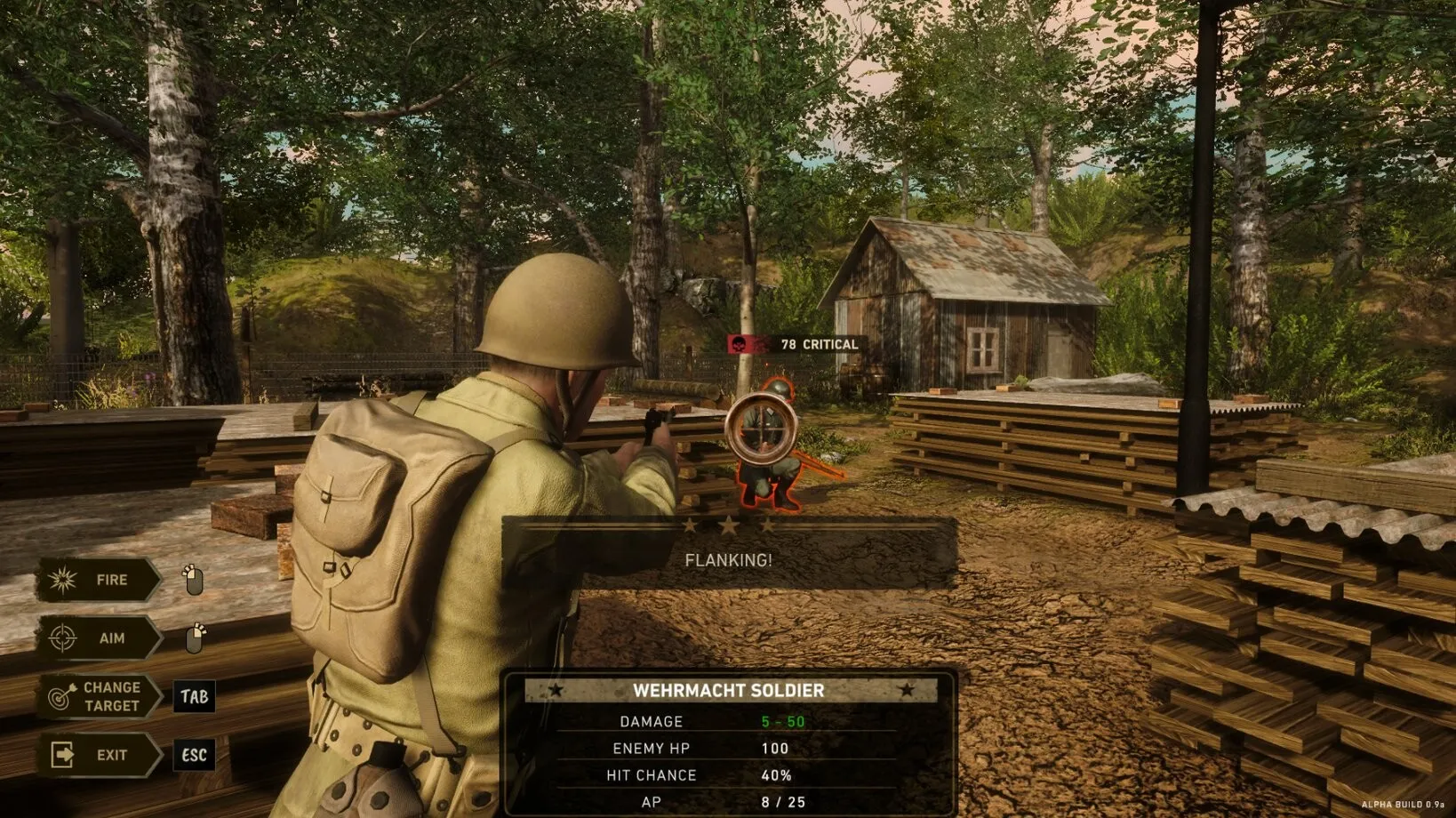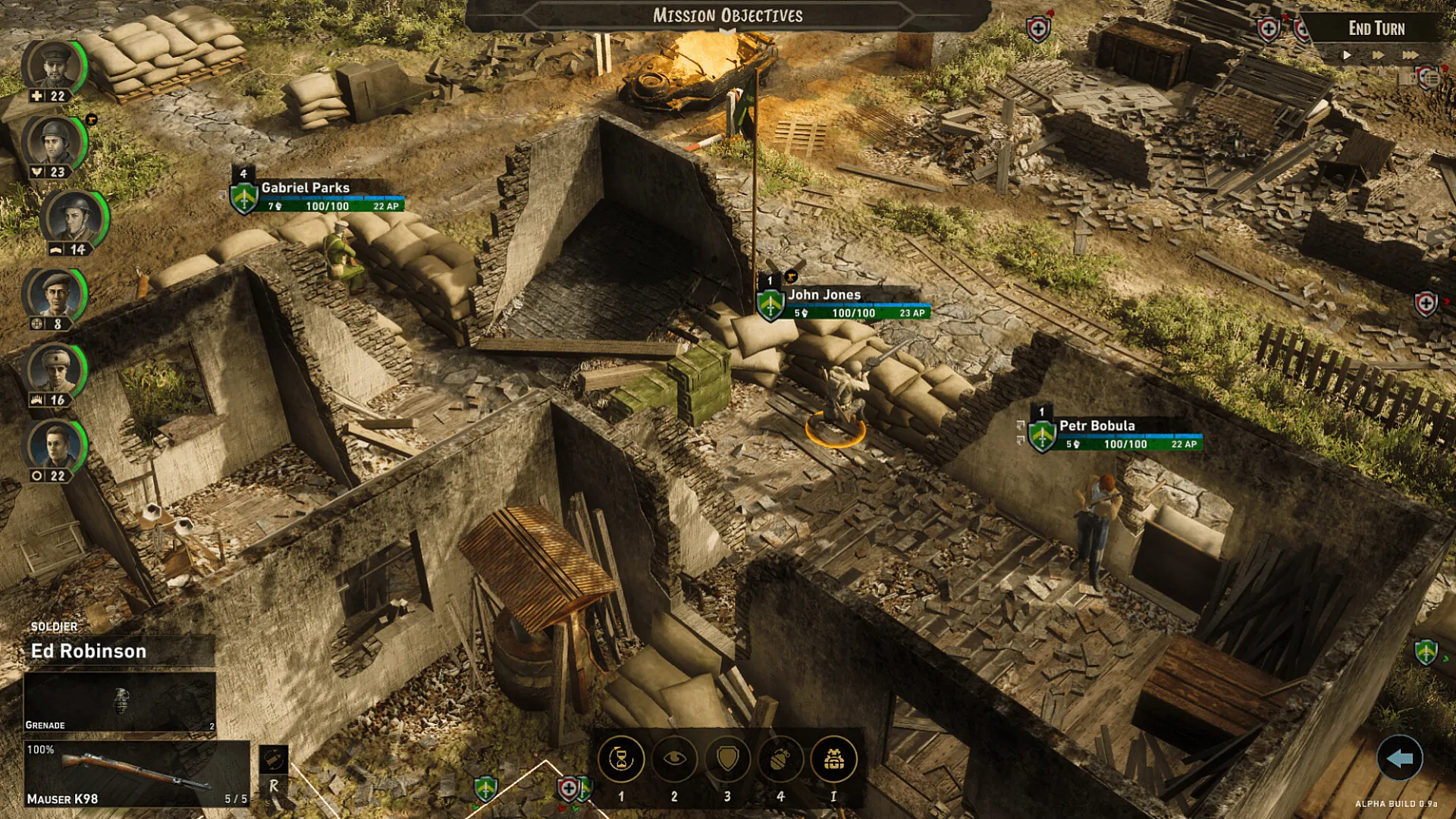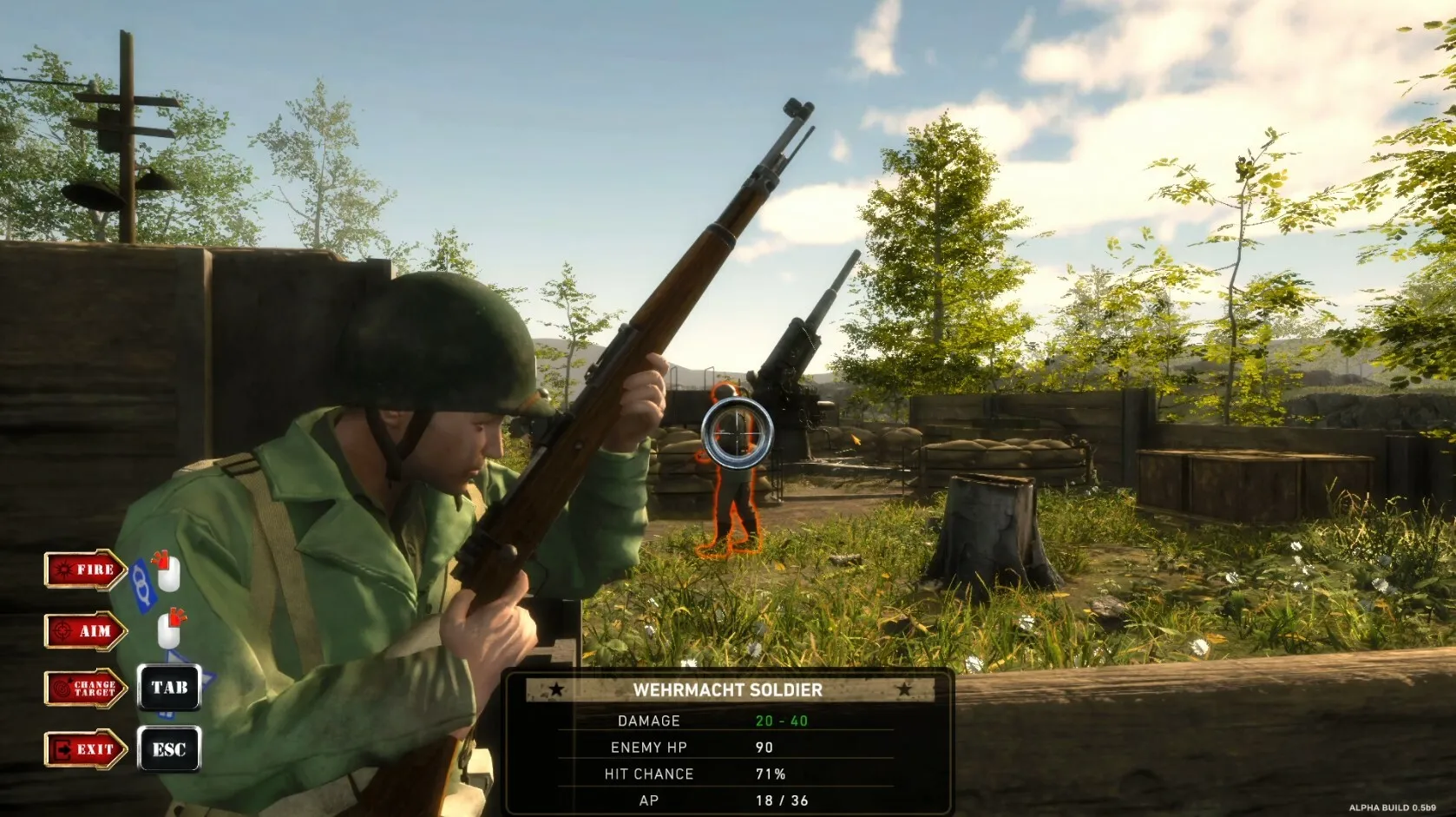“Forgotten but Unbroken” exposes players to the turbulent environment of World War II, where the struggle for survival is just as important as the battles waged.
This game, developed by Centurion Developments and released by MicroProse, is unique in the turn-based strategy genre because it combines tactical gameplay with a complex narrative that digs into the human experience of war.
Players take on the role of Commander Martin, leading a diverse group of resistance fighters in a setting that highlights conflict’s physical and psychological costs.
What distinguishes “Forgotten but Unbroken” from previous titles, particularly “XCOM,” is its methodical pacing and focus on resource management. While many tactical games take players through fast-paced missions, this title immerses them in military leadership’s slower, more difficult realities.
Players must not only plan in combat but also manage their base, ration supplies, and keep unit morale up, creating a one-of-a-kind experience. This blend of tactical depth and narrative engagement encourages players to reflect on the larger ramifications of their decisions, making it an engaging addition to the genre.
Gameplay Mechanics: A Tactical Depth
“Forgotten but Unbroken” excels in its gameplay mechanics, balancing tactical combat with resource management to create a complex and layered experience. At the heart of its combat system is an action-point framework that governs how players move their troops.
Unlike the more forgiving systems used in titles such as “XCOM,” where players can frequently do numerous actions in turn, this game limits movement, shooting, and other abilities to a finite number of points.
This constraint requires players to carefully prioritize their actions, cultivating a strategic depth that rewards deliberate planning over reckless attack. For example, a player may have to choose whether to move a soldier into cover or take a shot at an adversary, knowing that either option has serious effects.
The game’s combat also focuses on stealth, providing gamers with a range of tactical options. Players can launch missions focusing on covert operations, using the terrain for silent takedowns. This mechanic reflects the strategic levels featured in “Phantom Doctrine,” where stealth and intelligence are just as important as weaponry.
Furthermore, the psychological dimensions of combat introduce an unpredictable element; soldiers can panic under fire, leading to unforeseen consequences that reflect the genuine chaos of war. This intricacy emphasizes the game’s concept of human frailty, making each interaction suspenseful and poignant.
Resource management is critical in the mission experience, as players must monitor base operations between missions. Hunting for food, maintaining weapons, and cooking meals are not optional activities; they significantly impact troop morale and effectiveness. For example, neglecting to collect enough firewood can result in low morale, leading to probable desertions. This concept generates a strong sense of urgency, as players must weigh urgent combat needs against the long-term viability of their resistance force.
Troop customization adds depth to gameplay by allowing players to customize their squads with six separate soldier classes, each with its own qualities. This customization impacts not only combat effectiveness but also how successfully soldiers conduct non-combat jobs such as hunting or equipment repair. “Iron Will” traits can boost morale, yet physical features can affect a soldier’s susceptibility to disease.
This dense network of interdependencies provides another layer of strategy, pushing players to think critically about squad composition and the consequences of their combat and base management decisions. The result is a gameplay experience that feels unified and emotionally engaging, setting “Forgotten but Unbroken” apart from its competitors in the genre.
Narrative and Historical Context: Weaving Personal and Historical Stories
“Forgotten but Unbroken” stands out in the turn-based strategy genre not only for its mechanics but also for its engaging narrative framework. The game uses a dual storyline method, combining Commander Martin’s experience with key World War II historical events. This dual narrative adds depth to the gameplay experience, letting players engage with the larger historical background and the intimate hardships of a character deeply affected by the war.
Using real historical personalities, such as references to significant events like the Battle of Kursk, lends credibility and gravitas to the narrative, anchoring the player’s experience in verifiable history. Players are encouraged to reflect on the weight of leadership during turbulent times by this blend of personal and historical narration, a subject that runs throughout the game.
Emotional engagement is a key feature of the game’s design, with various instances designed to provoke powerful responses from players. For example, the catastrophic repercussions of decisions made in the heat of battle—such as sending a soldier on a dangerous mission—can lead to the loss of life and group morale. These choices contain themes of sacrifice and the heavy load of leadership, forcing players to ponder the human cost of their decisions.
This emotional investment is comparable to the narrative richness found in titles such as “This War of Mine,” where the focus on personal stories set against the backdrop of war enhances the gameplay experience above mere mechanics. Delving into the intricacies of leadership, friendship, and the brutal survival reality, “Forgotten but Unbroken” creates a rich narrative environment that enhances its strategic gameplay, making each mission feel significant.
Leadership and Decision-Making: The Weight of Command
The intricacies of leadership in “Forgotten but Unbroken” are not merely a backdrop; they are integral to the gameplay experience. Players are put into the role of Commander Martin, where the challenges of resource shortages and seasonal fluctuations greatly influence strategic decisions.
As time passes, players must navigate the harsh realities of winter, which limit operations and raise the stakes. Failure to procure appropriate supplies, such as food and firewood, can result in catastrophic morale reductions among troops, potentially leading to desertion or even death. This mechanic stresses the weight of leadership, as each decision can change the narrative’s direction and the resistance organization’s survival.
The value of strategy in this setting cannot be emphasized. Unlike many tactical games prioritizing quick combat victory, “Forgotten but Unbroken” demands players to engage in long-term strategy and flexibility. For example, the choice to send troops on resource-gathering missions invites risk—not only because of potential enemy contacts but also because they may return empty-handed, threatening the camp’s stability.
Such high-stakes decisions are reminiscent of the challenges encountered in games such as “Frostpunk,” where survival depends on striking a careful balance between present requirements and long-term viability. This ongoing contrast between short-term advantages and long-term costs improves the gameplay by challenging players to think critically about their leadership style while reinforcing the emotional weight of their decisions.
Every mission and resource allocation must be carefully examined, as neglecting one area might lead to a cascade series of failures, making every decision feel significant in the overall narrative arc.
Realism and Immersion: Authenticity in Every Detail
“Forgotten but Unbroken” creates a believable and immersive experience because of its historical accuracy and thoughtful environmental design. The game is based on real-world events and tactics from World War II, allowing players to engage in crucial missions that reflect historical realities.
For example, players may find themselves embroiled in activities resembling actual resistance attempts, such as sabotage missions or intelligence collection, that have been carefully created to match the methods of the time. This attention to historical detail enhances the narrative and teaches players about the complexities of military operations, echoing the careful approach found in titles such as “Company of Heroes,” where historical background is vital to gameplay.
The environmental design adds to the immersion, with finely detailed images depicting the desolation of wartime Europe. Each setting is thoughtfully designed to immerse players in the universe, from bombed-out settlements to deep woodlands. The character models are equally stunning, with motions that capture the weight of combat and the intensity inherent in each mission. With dynamic weather effects, the landscapes come alive, altering gameplay and strategy as conditions change.
Sound design plays a critical role in reinforcing this immersive environment. The game has a dynamic soundscape that responds to in-game events, smoothly shifting from the suspense of stealthy moves to the mayhem of open combat. Echoing the highs and lows of the narrative, the musical score enhances emotional moments.
This precise integration of sound and visual elements is reminiscent of the immersive features in games like “Hell Let Loose,” in which every audio cue contributes to the overall experience. Together, these elements of realism and immersion make “Forgotten but Unbroken” a notable title in the genre, encouraging players to lose themselves in its accurate depiction of World War II.
Challenges and Learning Curve: Navigating the Hurdles
While “Forgotten but Unbroken” provides a deep and immersive experience, there are several challenges, mainly regarding technological concerns and difficulty levels. Players have reported typical problems such as pathfinding failures and camera control malfunctions, which can break gameplay flow at vital points.
While not game-breaking, such performance difficulties can detract from an otherwise enjoyable experience, reminding players of the importance of refinement. Fortunately, Centurion Developments has demonstrated impressive responsiveness to player criticism, regularly delivering updates and patches to address these difficulties and improve overall performance. This focus on improvement indicates a concern for the player experience, which is widely acknowledged in the gaming community.
The difficulty level of “Forgotten but Unbroken” is another barrier, especially for newbies to the genre. The game’s high learning curve can be intimidating, as players must balance tactical planning, resource management, and unit morale. To efficiently navigate these challenges, players should take their time in the early missions, focusing on learning the mechanics before moving on to more complex scenarios.
Using stealth and smart unit placement can help offset some inherent hazards, allowing players to gain confidence and understanding as they adjust to the game’s demands. This gradual acclimation is essential for fully experiencing the depth and richness that “Forgotten but Unbroken” provides.
Conclusion: A Distinctive Strategy Experience
“Forgotten but Unbroken” stands out in the turn-based strategy genre due to its blend of historical accuracy, rich narrative, and compelling gameplay mechanics.
The focus on resource management and the psychological components of leadership in the game is refreshing, setting it apart from more action-oriented titles such as “XCOM.”
Players who value a meaningful, immersive experience that challenges their strategic thinking will find a lot to like here.
While the learning curve is high and technical flaws offer challenges, the developers’ dedication to refinement and the story’s emotional weight add to its total value, making it an appealing option for strategy enthusiasts.
The Review
Forgotten but Unbroken
"Forgotten but Unbroken" is an engaging blend of strategic depth, historical realism, and emotional storytelling. Despite significant technological flaws and a steep learning curve, its focus on leadership and resource management immerses players in the harsh reality of war. The developers' response to criticism enhances the experience, making it a rewarding venture for strategy enthusiasts.
PROS
- Deep, strategic gameplay with resource management elements.
- Strong historical context and immersion in WWII settings.
- Engaging narrative that intertwines personal and collective stories.
- Responsive developers who address player feedback actively.
CONS
- Technical issues such as glitches and pathfinding errors.
- Steep learning curve that may deter newcomers.
- Some gameplay mechanics may feel overwhelming initially.





















































